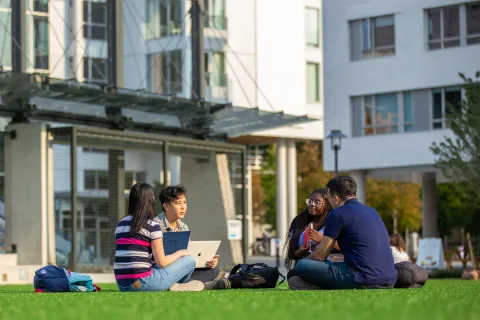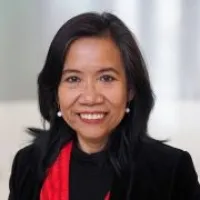Breaking the vicious cycles: A talk about equity, diversity and inclusion with Dr. Nora Angeles

Edited: July 5, 2022
For over two decades, UBC School of Community and Regional Planning associate professor Dr. Nora Angeles has used planning research and tools to promote equity, diversity and inclusion (EDI) around the world.
Her influential research has explored, among other things, how planning processes can be democratized and how social factors like class, sexuality and disability impact public participation and community organizing.
She has also led capacity-building projects in countries like Brazil, Vietnam and the Philippines, engaging with residents to help them redesign various parts of their communities — policies, programs, governance, institutional structures — to better meet local needs.

"I am particularly interested in how social differences shape the world around us," says Dr. Angeles, who is cross-appointed at UBC's Institute for Gender, Race, Sexuality and Social Justice. "How do things like class, language and religion influence the way people design and implement plans, programs and projects? How do they affect our everyday interactions with institutions?"
Dr. Angeles has received a number of honours and awards for her achievements, including the Queen Elizabeth II Diamond Jubilee Medal and the Distinguished Alumni Award (Social Planning for Community Transformation) from the University of the Philippines. She is also the recipient of the Civic Merit Award from the City of Vancouver, which stated in its award citation:
"[Dr. Angeles] has expanded students' understanding of traditional planning paradigms [and] inspired a generation of youth to consider planning and development within the context of diversity and inclusion. She is regarded as a change maker and leader who approaches issues with empathy, persistence and enthusiasm."
Interview with Dr. Angeles
How did you become interested in planning, particularly in the context of equity?
When I was in my twenties, in the 1980s and 1990s, I volunteered for various women's organizations and social movements in the Philippines. I also worked as a consultant on gender mainstreaming and international development projects.
There we called it popular education, alternative policy advocacy, community organizing or community-based research. Over here planners call it advocacy planning, communicative planning, equity planning. I was already approaching planning work through an equity, justice and inclusion lens then without realizing its 21st century equivalent terminology.
When I was hired at UBC, I became involved in a capacity-building project in Vietnam where local contexts demanded putting gender and ethnic equity front and centre. It was also required by the organization that funded the project, the Canadian International Development Agency.
What is the biggest barrier to achieving fair treatment and opportunity for all?
In spite of all the good EDI-related research and knowledge that we have, we still can't seem to translate that knowledge into effective action. How do you make knowledge about this knowledge-action gap work for real concrete change? That's the key challenge, and to tackle it we must first understand the roots — structural, institutional, political, historical — of the exclusionary policies and injustices we see around us today.
Our society is caught in vicious cycles of inequality and lack of diversity. The poor representation of a group of people in a particular field — politics, say, or business or engineering — leads to stereotypes about that group, be it women, people with disabilities or racialized groups. Those stereotypes then shape the ambitions of young people in that group, or devalue the experiences of those who choose to enter that field anyway — potentially to the point where they just drop out. These outcomes only widen the gaps that exist.
But I am optimistic that we can transform these vicious circles into virtuous ones. Human structures, institutions and practices are not natural, God-given realities. They are social constructs — people made them over time — so with the proper mindsets and approaches, we can change them and ultimately break free from the harmful stereotypes, conscious or unconscious biases, stigmas, prejudices and other elements that sustain these negative feedback loops.
What can planners do to promote equity, diversity and inclusion?
Planners can create avenues and systems — public service systems, transportation systems, governance structures — to facilitate difficult conversations about those subjects. Being able to talk across differences and ask people, "Why are or aren't we comfortable discussing this?" is the first step forward.
It's almost like going to therapy. Engaging in dialogue, getting into conflict instead of avoiding it — this is central to our individual and collective healing. There's actually a subfield of planning called therapeutic planning, which brings community members together to work through challenging issues. It's a process that allows the proper groundwork for change to be laid.
Learn More
Explore Dr. Angeles' biography and publications through UBC School of Community and Regional Planning.


